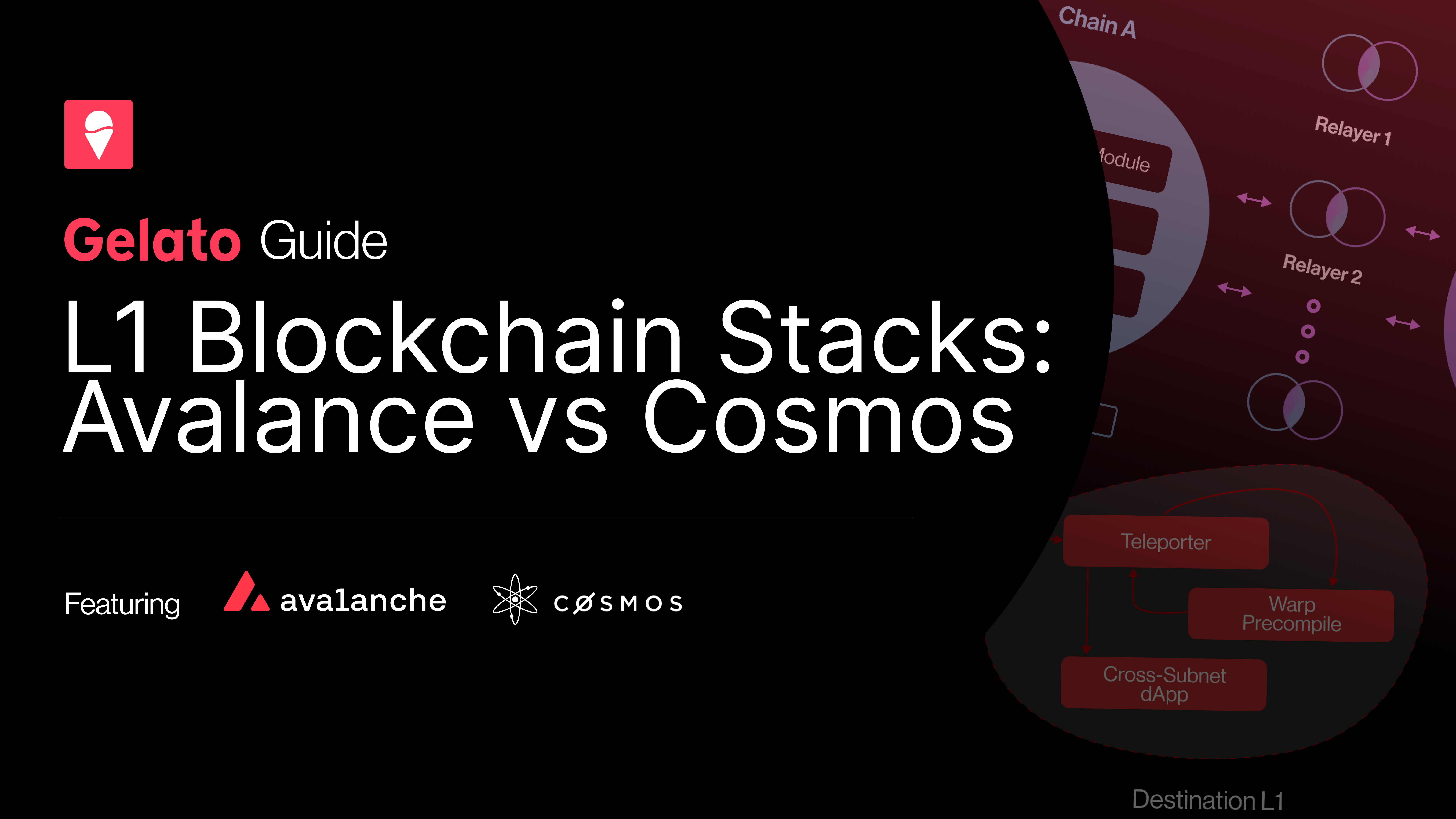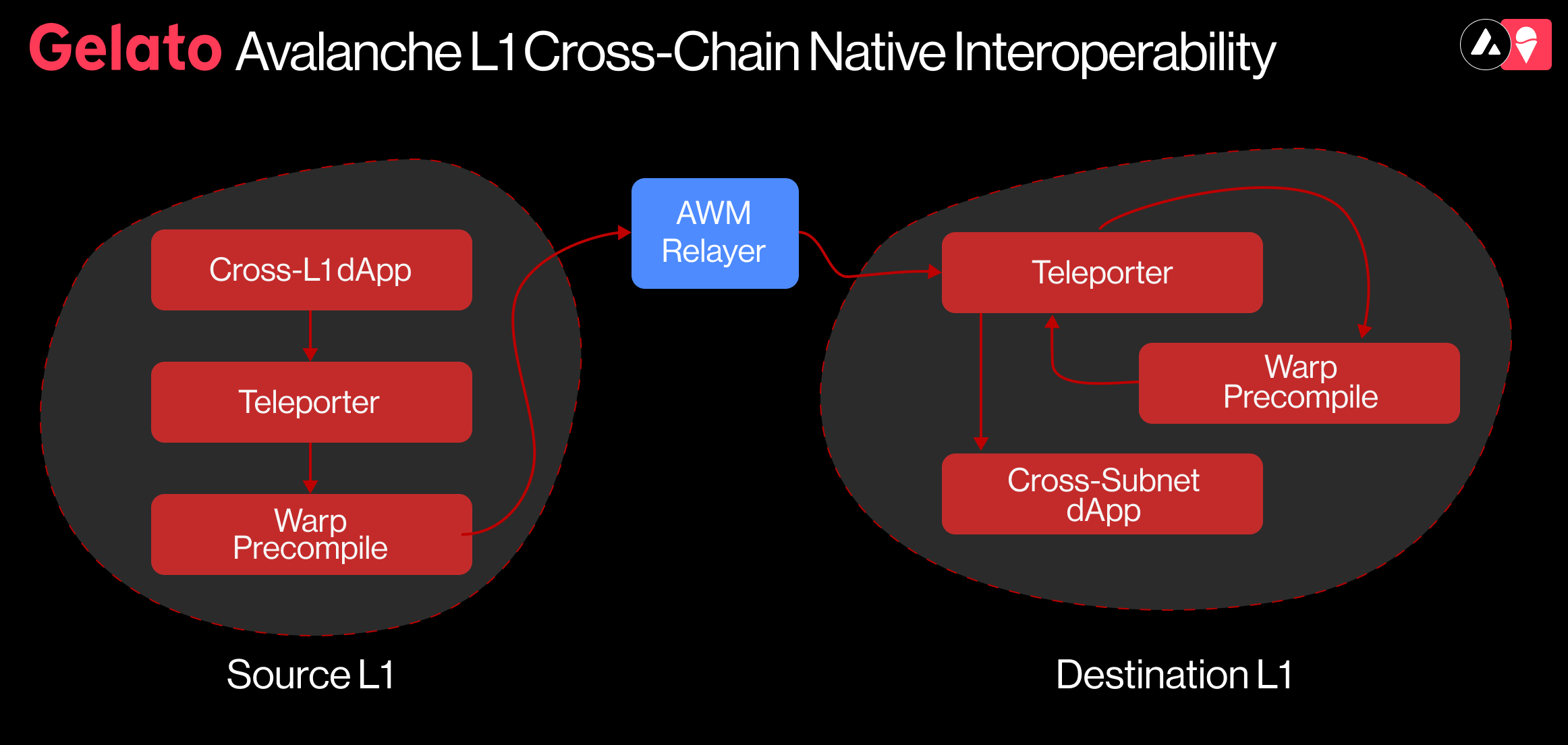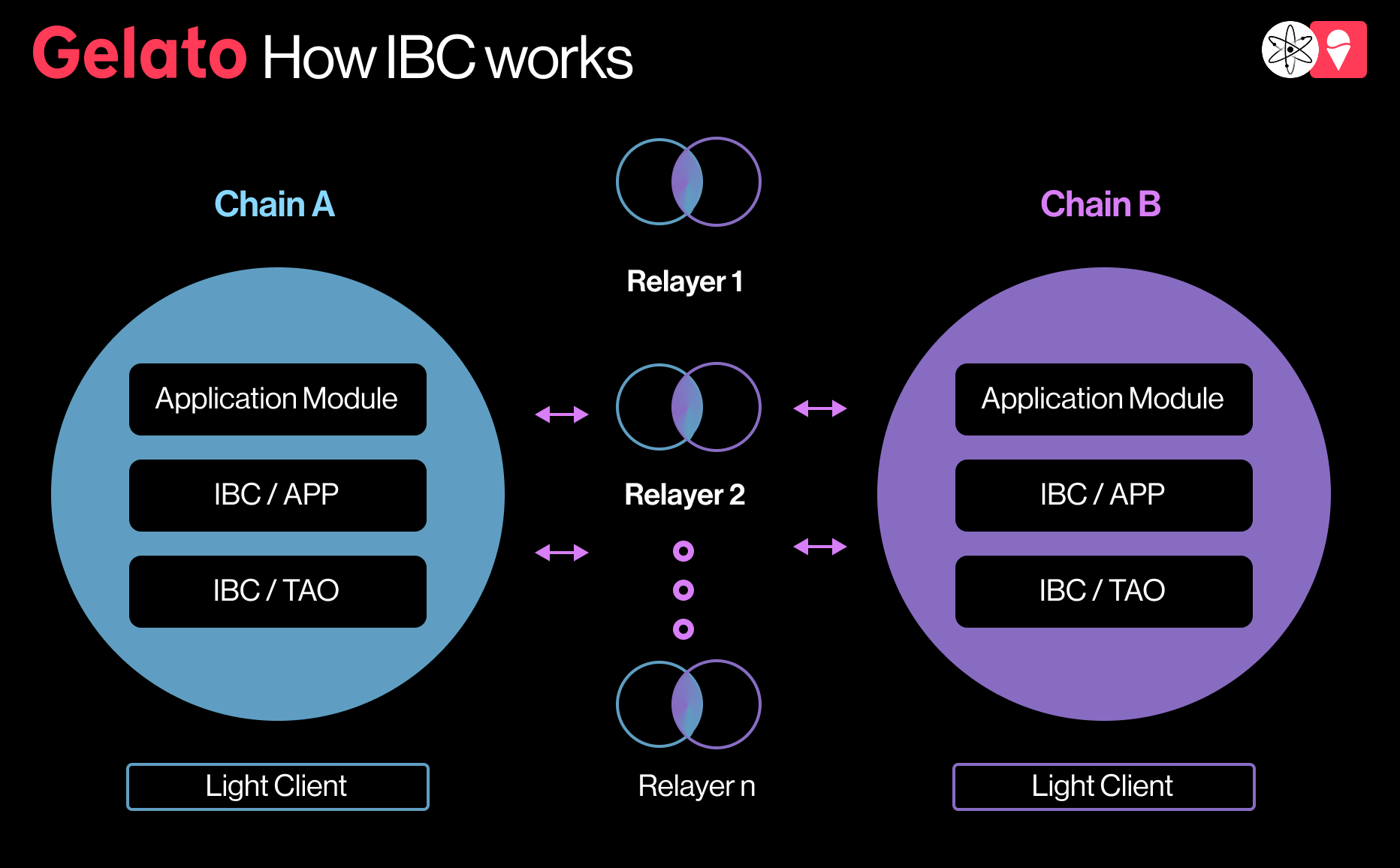24 days ago
L1 Blockchain Stacks: Avalanche vs Cosmos

Overview (TL;DR)
Recommended read: Gelato's Guide to Avalanche L1s and Native Interoperability
A comparison of Avalanche and Cosmos blockchain architectures, exploring various aspects from their consensus mechanism and interoperability solutions to real-world applications:
- L1 Blockchain Stacks Comparison
- How do Avalanche and Cosmos approach blockchain architecture?
- What are the key differences in their ecosystem designs?
- Comparing AvalancheGo vs. Cosmos CometBFT
- What are the core consensus mechanism differences?
- How do they approach validator participation?
- What are their performance characteristics?
- Interoperability Mechanisms
- What is Avalanche's AWM (Avalanche Warp Messaging)?
- How does Cosmos' Inter-Blockchain Communication (IBC) work?
- What are the key differences in their cross-chain communication?
- EVM Compatibility of Frameworks
- How do Avalanche and Cosmos support Ethereum-compatible smart contracts?
- Real-World Adoption and Use Cases of L1 Stacks
- What specific applications have been built on these platforms?
- How are Avalanche and Cosmos being used in different sectors?
- Conclusion
- How do Avalanche and Cosmos differ in their approach to blockchain development?
- What are the implications for enterprise and institutional adoption?
- How are Blockchain-as-a-Service (BaaS) solutions evolving?
L1 Blockchain Stacks Compared
Avalanche L1s vs. Cosmos L1s
Avalanche L1s and Cosmos both offer app-specific blockchains that scale horizontally with customizable rules, governance, and economics. The key difference is in how they structure their ecosystems and security models.
Cosmos operates as a loose federation of completely independent chains (zones) connected through the Inter-Blockchain Communication (IBC) protocol. Each zone must bootstrap its own validator set, security, and liquidity. However, with the introduction of Interchain Security, consumer chains can leverage the security of a provider chain (like the Cosmos Hub) without bootstrapping their own validator set. IBC Eureka, which just got released, will fundamentally simplify IBC while extending it to non-Cosmos chains, starting with Ethereum. It will enable direct Cosmos-Ethereum connectivity using ZK light client verification.
Historically, Avalanche required all validators to validate the Primary Network, which includes the C-Chain, P-Chain, and X-Chain. However, with the implementation of ACP-77, this requirement has been removed. Validators can now validate specific Layer 1 (L1) subnets without needing to validate the Primary Network. This change significantly reduces operational costs and staking requirements.
AvalancheGo vs. Cosmos CometBFT
AvalancheGo is the official Go implementation of Avalanche. It serves as the backbone for Avalanche’s Primary Network and custom L1s.
CometBFT (successor to Tendermint Core) is a Byzantine Fault Tolerant (BFT) consensus engine widely used in the Cosmos ecosystem. It separates consensus from application logic through the Application Blockchain Interface (ABCI) protocol.
| Aspect | AvalancheGo | Cosmos CometBFT |
|---|---|---|
| Consensus | Probabilistic via sub-sampled | Deterministic (Tendermint BFT) with fixed phases |
| Finality speed | Sub-second | Seconds |
| Validator flexibility | Dynamic participation + elastic validation ( Banff update onwards) | Fixed validator set per chain |
| Interoperability | AWM/Teleporter | ICB |
| Usecases | High-throughput DeFi | App-specific chains |
Both systems enable the creation of application-specific blockchains, but they differ in their approach to scalability and consensus mechanisms. Avalanche focuses on a multi-chain architecture with customizable L1s, while Cosmos emphasizes interoperable, independent chains connected through IBC.
Native Interoperability Compared: AWM vs. IBC
What is AWM and Teleporter
AWM enables native, trust-minimized communication between Avalanche L1s by using BLS multi-signature aggregation. Validators on the origin L1 collectively sign messages, and the destination subnet verifies them by referencing the validator set via the P-Chain’s validator registry. This eliminates third-party bridges and ensures trustless interoperability. Built on AWM, Teleporter simplifies cross-chain interactions by providing an EVM-compatible smart contract interface for ICM contracts.

What is IBC
The Cosmos SDK leverages CometBFT to implement Inter-Blockchain Communication (IBC), a protocol enabling cross-chain interoperability through two critical layers. The transport layer (TAO) manages authentication, packet ordering, and relaying via light clients, while the application layer defines data interpretation for token transfers and cross-chain interactions. IBC facilitates permissionless communication to Cosmos SDK chains and external ecosystems like Ethereum and Polkadot, without requiring shared consensus mechanisms.

How they differ
AWM and IBC have key differences in how they verify and structure their networks. AWM uses Avalanche's P-Chain to register all validators, allowing L1s to communicate with minimal trust and without constant connections. IBC, however, needs local syncing and specific channel setup. AWM's Teleporter can reward message relayers, while IBC doesn't offer built-in rewards for this. AWM gets its security from Avalanche's main validators, but IBC chains must trust each other's validators through light clients. As a result, AWM makes scaling easier, while IBC offers more detailed control over trust.
EVM Equivalence
Avalanche's C-Chain is EVM-compatible, allowing it to run Ethereum smart contracts with minimal modifications, but it does not fully replicate Ethereum's infrastructure like an EVM-equivalent chain would.
Cosmos-based chains can achieve EVM compatibility by integrating evmOS, an EVM-Cosmos framework. This allows any Cosmos SDK-based chain to integrate Ethereum-compatible smart contracts, wallets, and infrastructure without adopting a full Ethereum stack.
Adoption and Use cases on Avalanche & Cosmos
Avalanche’s L1 architecture enables purpose-built blockchains optimized for specific use cases. For example, DeFi Kingdom (DFK) Chain, migrated from Harmony to its own Avalanche L1, combining DEX functionality, liquidity pools, and NFT-based gameplay to enable real-time trading and gaming interactions. On the institutional side, Securitize has used Avalanche to issue tokenized securities in Europe, reflecting the network’s growing role in tokenized real-world assets.
The Cosmos SDK's flexibility has led to frequent forking, where projects adapt it to create customized blockchains. Berachain, for instance, is an EVM-identical Layer 1 blockchain built on the Cosmos SDK, utilizing a novel Proof of Liquidity (PoL) economic mechanism. We then have Initia, which combines Cosmos SDK with optimistic rollups to create an interwoven network of appchains supporting different VMs.
Conclusion
From a market positioning perspective, Avalanche has successfully targeted enterprise adoption and gaming applications by offering high-performance, customizable blockchain environments with institutional-friendly features. Cosmos has traditionally focused on decentralized, crypto-native use cases, offering developers the flexibility to build independent blockchains connected through IBC. However, with the rise of modular solutions like Celestia rollups, which provide scalable data availability layers for decentralized applications, Cosmos's approach may face redundancy.
To stay competitive, Cosmos will need to double down on institutional-grade applications, such as Noble’s stablecoin issuance, and carve out a clearer value proposition in a modular future. This strategic shift could enable Cosmos to balance its decentralized ethos with the growing demand for enterprise-grade solutions. In our next article, we’ll examine how Celestia rollups are transforming the modular blockchain landscape and their implications for platforms like Cosmos and Avalanche.
Launch Avalanche L1s on Gelato BaaS
With the ever-increasing number of application-specific chains enabling modular architectures, Blockchain-as-a-Service (BaaS) solutions are driving institutional adoption in particular.
Take the first step in testing and launching Avalanche L1s on Gelato. As we integrate Avalanche L1s into our Blockchain-as-a-Service (BaaS) platform, you'll gain access to streamlined deployment and management tools. Join our early adopters and start testing your Avalanche L1 today, leveraging Gelato's expertise in automation and interoperability. Get started now and explore the potential of our pioneering BaaS/RaaS solution: raas.gelato.network.
For developers looking to integrate their applications with Gelato Web3 Services, check out Web3 Functions, Relay, and VRF! Visit our Discord server for developer support and engagement, and stay updated with the latest developments by following us on X.

